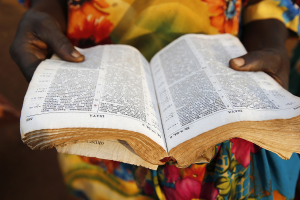North Korea Invites World to Watch Closure of Nuclear Testing Site Ahead of Trump Meeting

North Korean officials announced plans to dismantle their nuclear testing site and let the world watch, just over two weeks after South Korean President Moon Jae-in and North Korean leader Kim Jong Un declared an official end to the Korean War and agreed to denuclearize the Korean Peninsula.
"In accordance with the decision of the Third Plenary Meeting of the Seventh Central Committee of the Workers' Party of Korea, the Nuclear Weapon Institute and other concerned institutions are taking technical measures for dismantling the northern nuclear test ground of the DPRK in order to ensure transparency of discontinuance of the nuclear test," a press release from the DPRK's Ministry of Foreign Affairs said Saturday.
A special ceremony to dismantle the nuclear test site is expected to take place some time between May 23 and 25 depending on the weather, the statement from the DPRK said.
"Dismantlement of the nuclear test ground will be done in the following sequence-making all tunnels of the test ground collapse by explosion; completely blocking entries; removing all observation facilities, research institutes and structures of guard units on the ground. In parallel with dismantlement of the nuclear test ground, guards and researchers will be withdrawn and the surrounding area of the test ground be completely closed."
While the DPRK has invited foreign journalists to witness the event, officials said due to space constraints only journalists from China, Russia, the United States, United Kingdom and South Korea will be accommodated.
The dismantling of the nuclear test site in the DPRK is set to take place ahead of a major summit meeting between President Donald Trump and the North Korean leader next month. In a tweet on Saturday, President Trump praised the North Korean leader for his "very smart and gracious gesture."
"North Korea has announced that they will dismantle Nuclear Test Site this month, ahead of the big Summit Meeting on June 12th. Thank you, a very smart and gracious gesture!" Trump tweeted.
Last November, according to CNBC, North Korea unveiled its largest and most powerful rocket, the Hwasong-15 or KN-22, in its third intercontinental ballistic missile test.
Estimates from the Missile Defense Project at the Center for Strategic and International Studies say the Hwasong-15 is believed to have a range capable of hitting the entire continental United States.
Kim, who threatened to send missiles into waters near Guam, has reportedly fired more than 85 missiles and conducted four nuclear weapons tests since 2011, which is more than what his father, Kim Jong Il, and grandfather, Kim Il Sung, launched over a period of 27 years, CNBC said.
In a historic move last month, however, Kim appeared to adopt a more diplomatic stance when he became the first North Korean leader to set foot in South Korea at a meeting with President Moon at the Joint Security Area of Panmunjom inside the heavily-fortified Demilitarized Zone on the Korean peninsula.
At that meeting, along with establishing a sustainable peace regime and reuniting families, the leaders of the two Koreas said they would foster economic cooperation.
David Beasley, head of the U.N.'s World Food Programme who toured the DPRK under government supervision last week, told the BBC's Radio 4 he noticed a "sense of optimism" among North Korea's leaders while he was there.
"There is a sense of turning a new page in history," he told the BBC.
Beasly also noted that while total food security has not been established in the DPRK, there had been noticeable improvement since the 1990s.
"One of the most powerful things that I saw was out in the countryside — it's spring, they're planting — there's not mechanization, you've got oxen pulling ploughs, men and women in the fields," he said.
"It's very structured, very organized, every foot and inch of dirt is being toiled with rakes and hoes and shovels and they're literally planting crops up to the edge of the road, down embankments, using every available space, because it is a land that's mostly mountainous.
"I didn't see starvation like you had in the famine back in the 1990s, that's the good news. But is there a hunger issue, is there under-nutrition? There's no question about it."





























